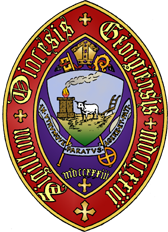From the Diocese’ founding until 1906, a single convention met each year, conducting business for all the clergy and congregations of the Diocese. In that year, just before the Diocese divided into two dioceses in one state, the convention approved a separate “Council for Colored Churchmen.” It was at the second such meeting in 1907 at Good Shepherd in Thomasville, that Bishop C.K. Nelson set aside Anna E.B. Alexander as a Deaconess. The separate church meetings continued all through the Episcopacy of Bishop Frederick F. Reese who was the first Bishop of Georgia after the creation of the Diocese of Atlanta.
 In 1911, Bishop Reese reported to the all white convention of the Council for black Episcopalians, “every possible opportunity should be given this Council and responsibility laid upon it for the direction of the work among their own people.”
In 1911, Bishop Reese reported to the all white convention of the Council for black Episcopalians, “every possible opportunity should be given this Council and responsibility laid upon it for the direction of the work among their own people.”
In his first Bishop’s Address in 1936, the Rt. Rev. Middleton Stuart Barnwell said, “I am particularly concerned about the relationship existing between the Convention of the Diocese and the colored churches.” Naming “manifest inconsistencies in our canon laws which deal with this relationship,” he called for a committee “to consider this matter seriously.”
He went on to add, “I have no desire to suggest at this time any change in the relationship existing between the Council of Colored Churchmen and the Diocesan Convention. I wish, however, to make myself perfectly clear in one respect. This committee may go as far as it pleases in the matter of granting recognition to the colored parishes on the floor of this Convention, without meeting with any opposition on the part of the ecclesiastical authority.”
The Diocese of Virginia had enfranchised black churchmen to vote in its diocesan convention in 1931. Bishop Barnwell wanted to gently lead the Diocese through this same change, so he made it clear that he would fully support meeting in a single convention. Yet, he added, “This is a matter which I intend, however, to leave entirely in your hands, as I realize full well that it is a matter upon which a comparative new-comer in your midst should walk warily.”
 Diocesan conventions continued to be segregated as black Episcopalians met in a separate Council presided over by the Bishop of Georgia. In 1946, the Federal Council of Churches condemned discrimination as Mainline Protestant churches began to move towards the goal of a “desegregated church in a desegregated society.” The Federal Council of Churches named discrimination as a “violation of the gospel of love and human brotherhood.”
Diocesan conventions continued to be segregated as black Episcopalians met in a separate Council presided over by the Bishop of Georgia. In 1946, the Federal Council of Churches condemned discrimination as Mainline Protestant churches began to move towards the goal of a “desegregated church in a desegregated society.” The Federal Council of Churches named discrimination as a “violation of the gospel of love and human brotherhood.”
In 1947 the Diocese of Georgia took steps to end racial distinctions between clergy and lay leaders in the constitution, canons, and in other official references. This action followed trends among other southern dioceses as the Diocese of Southern Virginia had acted in 1946 and South Carolina and Arkansas would do so in 1947. The constitution and canons amended in 1947 provided that “future representatives of both races would attend the same assembly and have the same voting privileges.”
Pictured: Photos taken at two Councils for Colored Churchmen in the Diocese of Georgia with the top undated photo taken in front of St. Athanasius’ Church in Brunswick and the bottom one from 1942 in Augusta.
